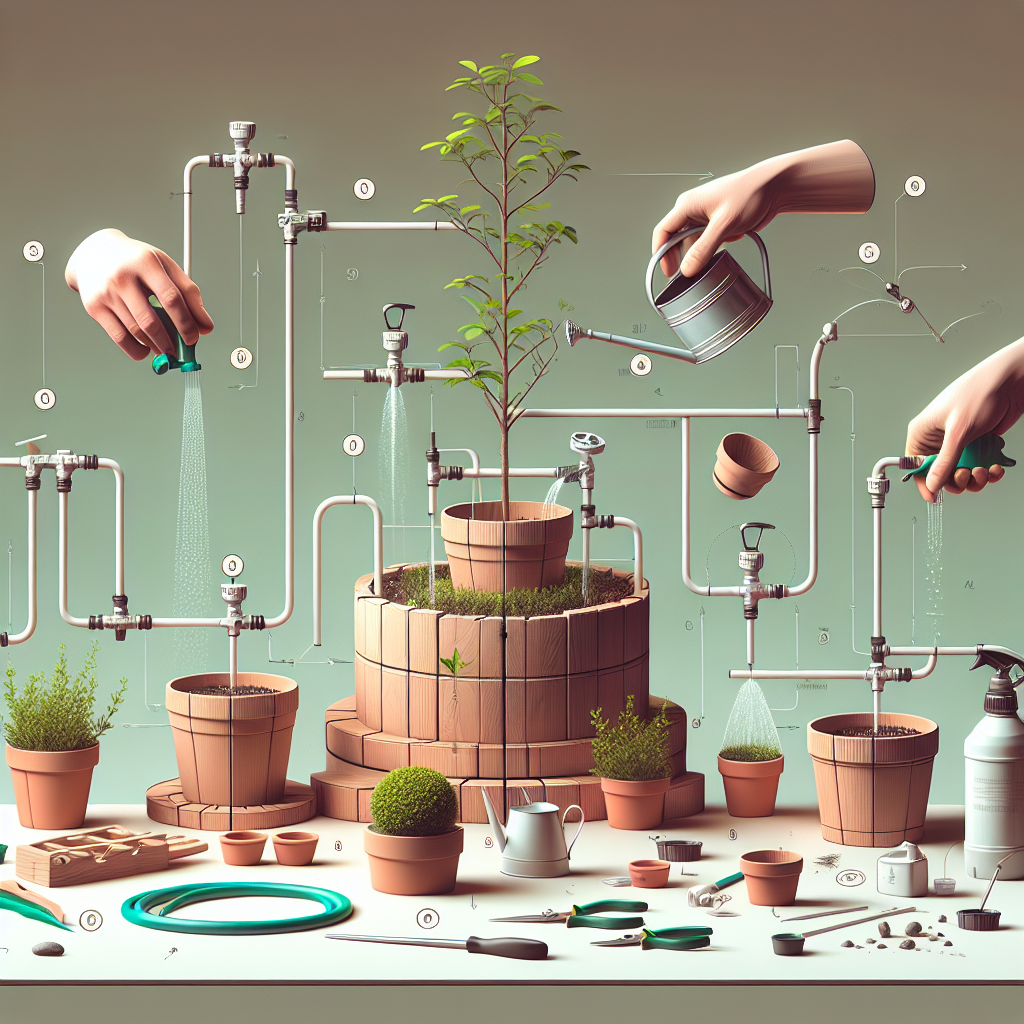Imagine coming home from a long day at work, only to realize that you forgot to water your plants again. It’s a scenario that many of us have experienced – the struggle of keeping our beloved green friends hydrated and healthy. But fear not, there is a solution that can make watering your plants a breeze – a DIY slow drip watering system. This simple yet effective method of irrigation can save you time, water, and the hassle of constantly monitoring your plants’ hydration levels.
In this article, we will explore how you can create your own DIY slow drip watering system for your pots. We will discuss the benefits of using this method, the materials you will need, and step-by-step instructions on how to set it up. Say goodbye to wilted plants and hello to effortlessly watered greenery with a slow drip watering system!
**Benefits of a Slow Drip Watering System**
Setting up a slow drip watering system for your pots offers numerous benefits for both you and your plants. Firstly, it helps ensure that your plants receive a consistent supply of water over an extended period of time. This is especially beneficial for plants that require consistent moisture levels to thrive.
Additionally, using a slow drip system can help prevent over-watering or under-watering your plants. By controlling the flow rate of water to each pot, you can avoid the risk of drowning your plants or causing root rot due to excessive moisture. This is particularly helpful for novice gardeners who may struggle with finding the right balance when manually watering their plants.
Furthermore, a slow drip system can save you time and effort in the long run. Once set up, all you need to do is refill the reservoir periodically, and the system will take care of the rest. This means no more worrying about forgetting to water your plants or having to rearrange your schedule around their watering needs.
**Materials You Will Need**
To create your own DIY slow drip watering system, you will need the following materials:
1. Plastic tubing: Choose flexible tubing that is long enough to reach from your water source to each pot.
2. Reservoir: This could be a large container like a bucket or jug that will hold the water supply for your system.
3. Punch tool: Use this tool to create small holes in the tubing for water drips.
4. Connectors: To attach multiple tubes together or connect them to the reservoir.
5. Timer (optional): If you want more control over when and how long your plants are watered, consider adding a timer to automate the process.
**Step-by-Step Instructions**
1. Measure and cut the tubing: Start by measuring how much tubing you will need by running it from your water source (e.g., faucet) to each pot in which you want to install the system. Cut pieces of tubing accordingly.
2. Create holes in the tubing: Using the punch tool, make small holes along one side of each piece of tubing where it will be placed inside each pot.
3. Connect tubes together: Use connectors if necessary to link multiple pieces of tubing together or connect them to the reservoir.
4. Place tubing inside pots: Insert one end of each piece of tubing into its corresponding pot through drainage holes or directly into soil.
5. Set up reservoir: Fill the reservoir with water and place it at an elevated position above all pots so gravity can help distribute water through the tubes.
6. Test flow rate: Turn on the faucet or manually fill reservoir with water and observe how fast or slow water drips from each hole in the tube.
**FAQ**
1- Can I use any type of plastic tubing for my DIY slow drip watering system?
-It is recommended to use flexible plastic tubing designed specifically for irrigation purposes as it is durable and resistant to clogging.
2- How often should I refill my reservoir?
-The frequency with which you’ll need refills depends on factors such as plant size, weather conditions, and soil type; monitor regularly until you establish an appropriate schedule.
3- Can I adjust how much water flows through each hole in my tubing?
-Yes; experiment with different hole sizes or spacing until achieving desired flow rate; keep in mind some trial-and-error may be necessary initially.
In conclusion, creating a DIY slow drip watering system for your pots can revolutionize how you care for your plants without breaking a sweat! With just a few simple materials and steps outlined above, you can enjoy hassle-free irrigation while promoting healthy growth in all your potted greenery. So why wait? Give it try today and watch as your plants thrive under this effortless watering method!













